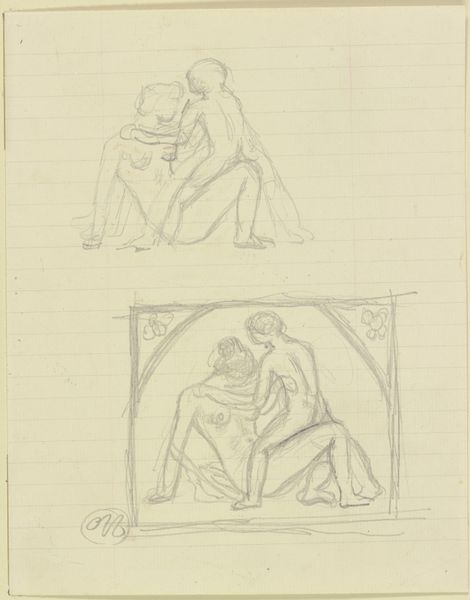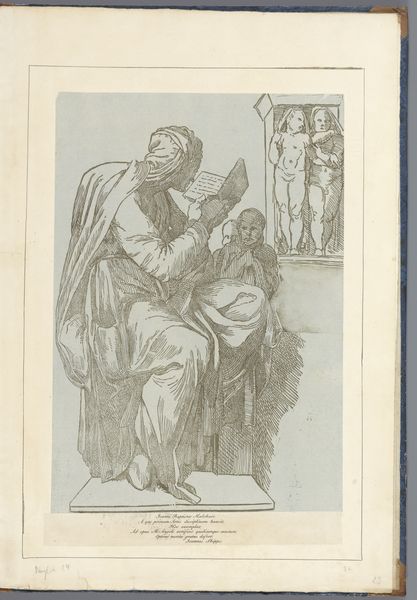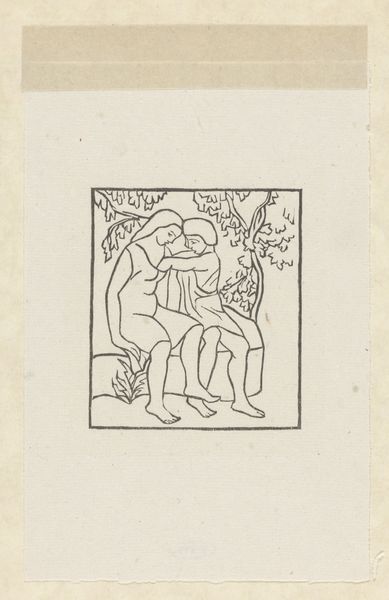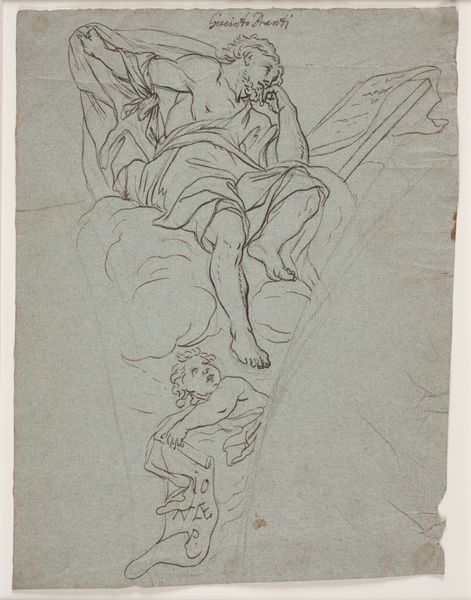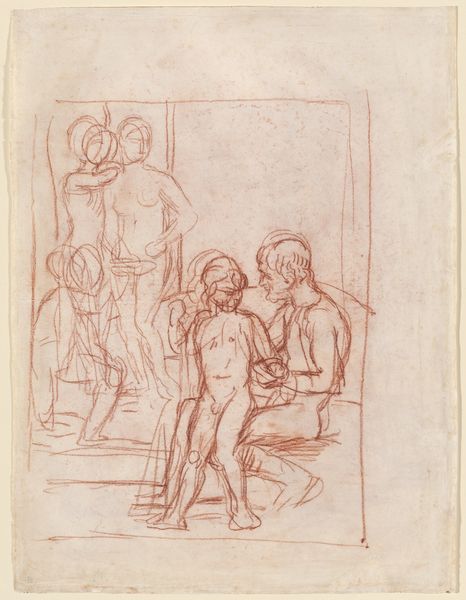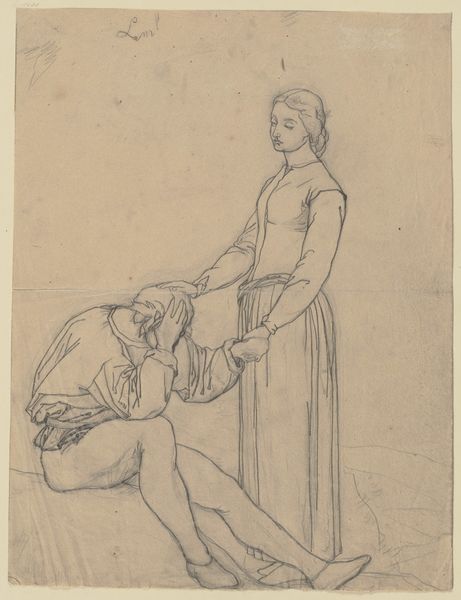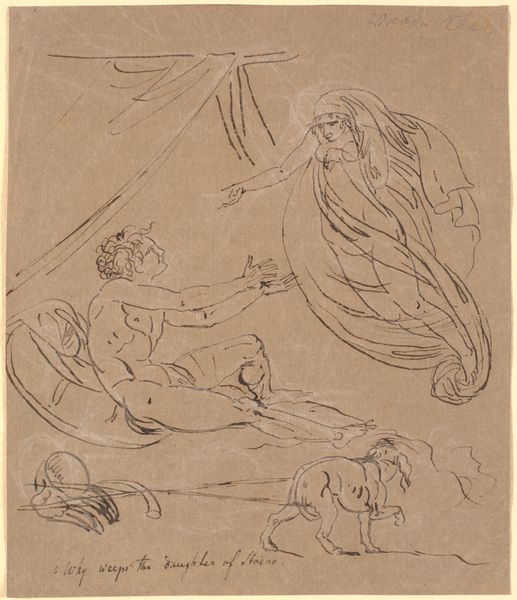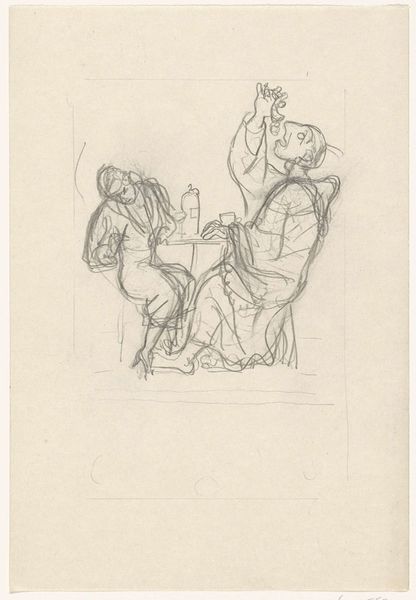
Ontwerp voor wandschildering in de Beurs van Berlage: zittende vioolspeler en Mercurius 1869 - 1925
0:00
0:00
drawing, pencil
#
portrait
#
drawing
#
figuration
#
pencil
#
line
#
portrait drawing
#
history-painting
#
academic-art
Dimensions: height 274 mm, width 177 mm
Copyright: Rijks Museum: Open Domain
Editor: This is "Ontwerp voor wandschildering in de Beurs van Berlage: zittende vioolspeler en Mercurius", a pencil drawing by Antoon Derkinderen, dating from 1869 to 1925. I'm immediately struck by how the figures seem to float, disconnected from a clear background. How do you interpret this work within the context of its time and intended location, the Beurs van Berlage? Curator: Given this was a design for a mural in the Beurs van Berlage, we need to consider the building's symbolic role. Berlage’s stock exchange was conceived as a socialist cathedral, meant to foster ethical trade and civic pride. Derkinderen's figures—a seated violinist and Mercurius, the Roman god of commerce—aren’t just decorative. Consider what their presence signifies in that setting. What does the pairing of music and commerce suggest about the values the Beurs was trying to promote? Editor: So, it's not just about beauty, it’s about conveying a specific message related to the building's purpose? The contrast between the "high" art of the violinist and the commercial aspect represented by Mercurius...were they perhaps trying to elevate commerce through art? Curator: Precisely! Think about the prevailing social theories at the turn of the century. There was a strong desire to infuse even mundane activities like trade with a sense of morality and cultural significance. Derkinderen’s classicizing style, which borrows from earlier art historical periods, aims to legitimize and ennoble these ideals. The artistic style and imagery are used to add a veneer of history to modern commercial practices. What statement is the building trying to make? Editor: It’s like they’re trying to ground modern commerce in the values of the past. Seeing it as a reflection of these social and political forces makes it far more meaningful. Curator: Exactly. By viewing art as intertwined with its social context, we gain a much deeper understanding. Editor: This makes me realize the importance of thinking about how artworks actively participate in shaping cultural values, thanks!
Comments
No comments
Be the first to comment and join the conversation on the ultimate creative platform.
